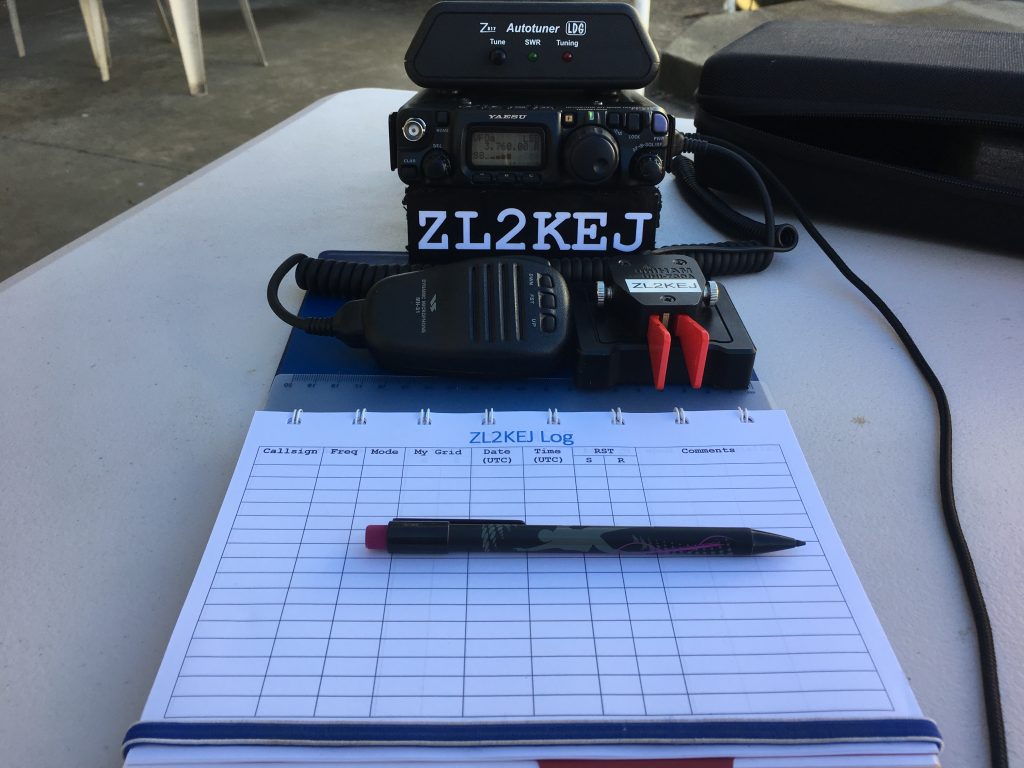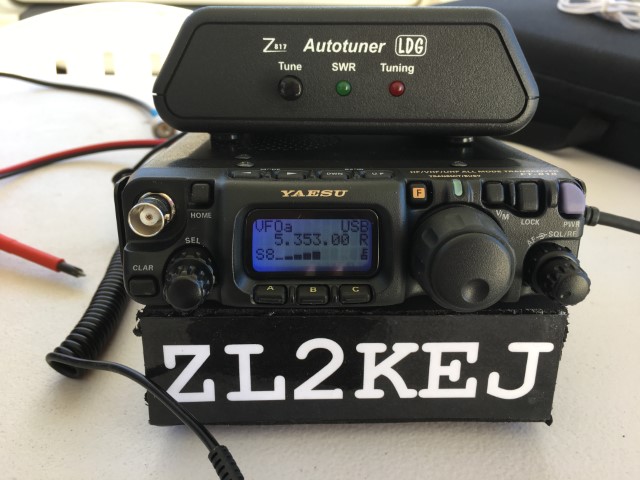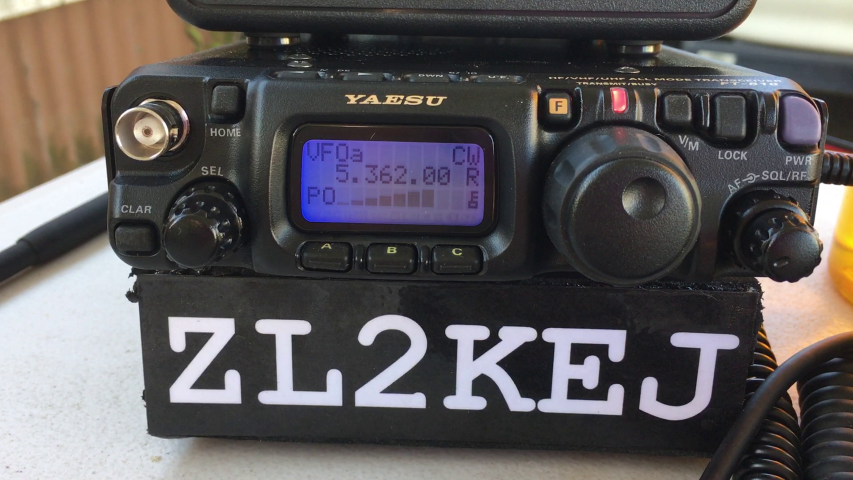I've had the Yaesu FT-818ND for nearly 3 months now so figured it was time to do an actual review on the rig.
I got hooked on the idea of FT-818 from a friend who had one given it's much smaller and lighter than my FT-897D I thought it would be ideal for portable operating.

I can't compare this to the FT-817 or FT-817ND as I never owned either of those radios, but if you have either of those, then from my reading and research, you probably don't need to worry about upgrading to the FT-818ND.
Initial Thoughts
When I first received the Yaesu FT-818ND I was impressed with it's overall functionality.
Onboard battery pack or the ability to put 8 AA batteries into the radio means it's possible for a quick setup in order to operate. Especially if you have a resonant antenna that requires no tuner. Nothing else other than the antenna, feed line and radio with mic or key would be required.
The radio has a 6m/2m & 70cm whip antenna that can be attached to the front BNC connector so getting on the air is pretty easy as far as 6m - 70cm is concerned. Though I do recommend you run a counterpoise with the supplied whip.
This radio is ideal for a quick setup and it does fit in a backpack quite easily.


Setting up a multi-band or non resonant antenna isn't difficult by any means. However, this does require the use of an external tuner. Unlike some QRP radio's, the Yaesu FT-818ND does not have a built in tuner.
The most common tuner used with this and the predecessors to the FT-818 is the LDG Z-817, which is a semi-automatic tuner. I'll post my thoughts on the Z-817 Tuner in another article.
By default, the Yaesu FT-818ND does not come with the ability to transmit on 60m, I had to modify my radio in order for it to do so.
While this was not hard to do I would suggest if you're not keen on removing SMT resistors and working in tight spaces with a soldering iron you ask someone to do this for you.
Operational Observations
I was very impressed with the FT-818ND's transmit and receive. Given your antenna has the most impact on how well your signal will get out, I tend to believe that the FT-818ND is a very good radio for both transmit and receive.
The internal speaker position on top of the radio can mean that you need to run the volume louder as the sound will inherently aim back away from you if you have it on a stand like I did.
I have no issue with the onboard speaker, but in a noisy environment it could be harder to hear and picking out some audio in the noise could make life more difficult, so I generally plug in some closed back headphones (read bloody expensive studio headphones) though I have no issue with the audio quality from the internal speaker.
The supplied mic, (Yaesu's MH-31) is I find a nice microphone to use. I personally have no problem with the audio coming from it.
I've seen a lot of people complain that the DC jack on the FT-81x radio's has been an ongoing issue for some time and Yaesu doesn't seem to listen to customers with regards to this being a common area of damage from general use.
I purchased a Powerpole adapter in order to circumvent any damage that may occur through plugging the radio in. However, I then found there was an undocumented feature that Yaesu seem to have left out of the manual.
The backlight will never turn off with anything plugged in to the DC jack, power supplied or not.
There is also an issue with the radio constantly providing 5v power to the accessory port, even when the radio is off, which in turn drains the internal battery pack if left hooked up in the radio
As far as the internal 9.6v 1900mAh battery goes, I managed to get about an hour and a half out of it while operating on Jock White field day 2019. Though this could vary depending on TX/RX cycles. So for quick short operating periods it's not bad.
I would recommend getting or building a decent power system for the radio for long term operating.
In the Field
As I said, I found the radio to perform very well both on TX and RX, During JWFD I managed QSO's from Northland, Waiheke Island down the the lower South Island on 5 watts.
I was using an End-fed random wire antenna with a 4:1 unun which tuned very well. Some stations were more work than others, which is to be expected.
Given that I was in a gully in Pohangina Valley I can not complain about the radio's ability to transmit and receive signals. I think most will find this radio performs very well for conditions if their antenna is even remotely half decent.
Final Thoughts
Would I buy this radio again given what I know now?
Yes, absolutely. Given that I can put it in a back pack and carry it around while mountain biking is a big plus.
I may not be operating for hours on end but so far the testing I have done with 1/4 wave resonant verticals on a 7.2m fishing pole that I can strap to my bike means I can setup anywhere.
I am looking forward to actually getting out more with this radio when time permits.
If you're in the market for a QRP portable radio, I would recommend you add the Yeasu FT-818ND to the compare list as it may surprise you.